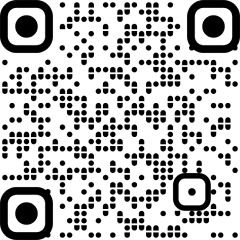- Industry
- 4 min read
Grade-II leprosy disabilities in Vizag exceed national average: Study
The NLEP's leprosy case detection campaign, launched in 2017, should strengthen community outreach, using mascots like Sapna to counter myths, as five grade II disability cases cited fear or ignorance," the researchers added.
A significant proportion (14%) of newly diagnosed cases exhibited disabilities, with grade II prevalence (9%) exceeding the national average (7.7%). Multibacillary leprosy was predominant, and childhood cases highlighted ongoing transmission risks.
Delayed healthcare-seeking behaviour (averaging eight months) was strongly linked to grade-II disabilities. Stigma remained a critical barrier, leading to symptom concealment and worsened outcomes. Ulnar nerve involvement was prevalent, particularly in hand impairments.
These findings stem from a study conducted by researchers from the departments of community medicine at Panimalar Medical College Hospital and Research Institute, Chennai, and Government Medical College, Vizianagaram.
"Our study had no children with disabilities, likely due to early paucibacillary leprosy diagnosis. However, child cases underscore the need for contact-tracing and post-exposure prophylaxis, which the national leprosy eradication programme has implemented since 2018.
The eight-month median healthcare-seeking delay, linked to grade-II disability in five cases, highlights that a three-month delay increases disability risk.
One patient talked about concealing patches to avoid rejection, emphasising stigma's role, mirroring an earlier finding that 78% of leprosy patients feared disclosure.
Another assumed it was just a skin issue, thus, revealing limited awareness, which aligns with another study where 79% of patients lacked leprosy knowledge before diagnosis," said Siva Priya Jalakam Venkata, Sivakumar Lotheti, and Devi Madhavi Bhimarasetty, the researchers involved in the study.
"Hand predominance in grade-II disability, observed in six (9%) cases, corresponds with another study's finding of a 44.48% hand deformity rate, affecting function, as one patient shared: ‘I struggle to grip tools now'.
One patient's belief that ‘leprosy is a curse' led them to consult a faith healer, delaying care by a year. Meeting the WHO's one-million grade-II disability (G2D) target demands addressing delays and stigma, as another patient's remark, ‘I didn't know treatment was free', indicates gaps in information, education, and communication.
The NLEP's leprosy case detection campaign, launched in 2017, should strengthen community outreach, using mascots like Sapna to counter myths, as five grade II disability cases cited fear or ignorance," the researchers added.
Of the 68 participants, 55 (81%) were aged 15–60 years, with a mean age of 36.72 ± 17.99 years. Seven (10%) cases were children (<15 years), suggesting active transmission.
Males comprised 42 (62%), and 27 (39%) belonged to the middle socioeconomic class. Three (4%) cases reported a family history of leprosy, indicating a household transmission risk. The study was published in Cureus, a medical journal of Springer Nature.
Visakhapatnam: Visakhapatnam had reported 299 cases of leprosy in 2019. A recent study analysing 68 of these cases, identified a persistent burden of leprosy-related disabilities, despite active detection efforts.
A significant proportion (14%) of newly diagnosed cases exhibited disabilities, with grade II prevalence (9%) exceeding the national average (7.7%). Multibacillary leprosy was predominant, and childhood cases highlighted ongoing transmission risks. Delayed healthcare-seeking behaviour (averaging eight months) was strongly linked to grade-II disabilities.
Stigma remained a critical barrier, leading to symptom concealment and worsened outcomes. Ulnar nerve involvement was prevalent, particularly in hand impairments.
These findings stem from a study conducted by researchers from the departments of community medicine at Panimalar Medical College Hospital and Research Institute, Chennai, and Government Medical College, Vizianagaram.
"Our study had no children with disabilities, likely due to early paucibacillary leprosy diagnosis. However, child cases underscore the need for contact-tracing and post-exposure prophylaxis, which the national leprosy eradication programme has implemented since 2018.
The eight-month median healthcare-seeking delay, linked to grade-II disability in five cases, highlights that a three-month delay increases disability risk.
One patient talked about concealing patches to avoid rejection, emphasising stigma's role, mirroring an earlier finding that 78% of leprosy patients feared disclosure.
Another assumed it was just a skin issue, thus, revealing limited awareness, which aligns with another study where 79% of patients lacked leprosy knowledge before diagnosis," said Siva Priya Jalakam Venkata, Sivakumar Lotheti, and Devi Madhavi Bhimarasetty, the researchers involved in the study.
"Hand predominance in grade-II disability, observed in six (9%) cases, corresponds with another study's finding of a 44.48% hand deformity rate, affecting function, as one patient shared: ‘I struggle to grip tools now'. One patient's belief that ‘leprosy is a curse' led them to consult a faith healer, delaying care by a year.
Meeting the WHO's one-million grade-II disability (G2D) target demands addressing delays and stigma, as another patient's remark, ‘I didn't know treatment was free', indicates gaps in information, education, and communication.
The NLEP's leprosy case detection campaign, launched in 2017, should strengthen community outreach, using mascots like Sapna to counter myths, as five grade II disability cases cited fear or ignorance," the researchers added.
Of the 68 participants, 55 (81%) were aged 15–60 years, with a mean age of 36.72 ± 17.99 years. Seven (10%) cases were children (<15 years), suggesting active transmission.
Males comprised 42 (62%), and 27 (39%) belonged to the middle socioeconomic class. Three (4%) cases reported a family history of leprosy, indicating a household transmission risk. The study was published in Cureus, a medical journal of Springer Nature.



COMMENTS
All Comments
By commenting, you agree to the Prohibited Content Policy
PostBy commenting, you agree to the Prohibited Content Policy
PostFind this Comment Offensive?
Choose your reason below and click on the submit button. This will alert our moderators to take actions